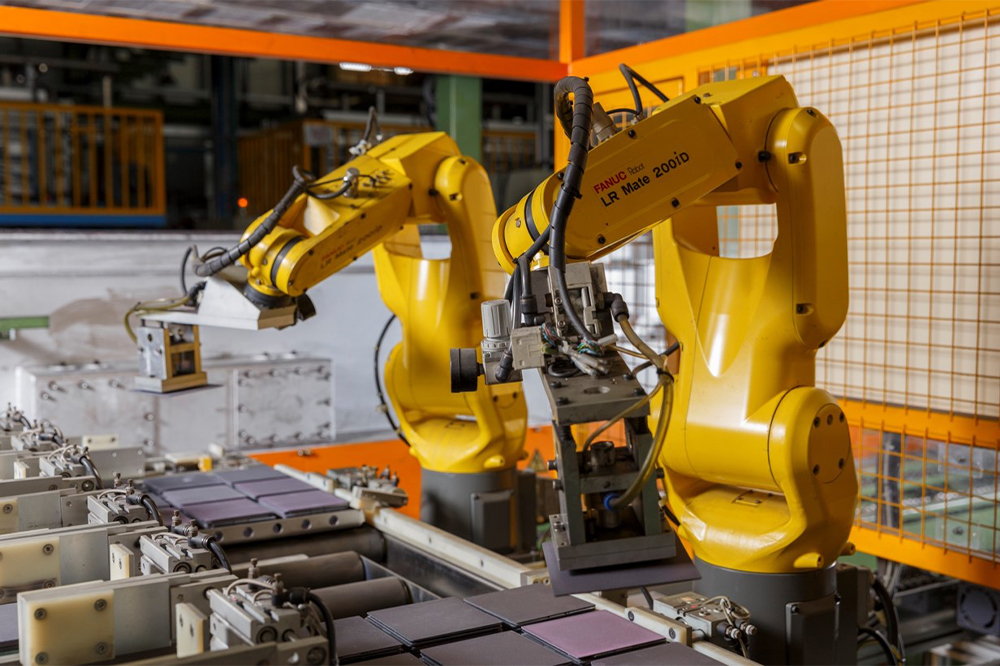
Interconnect plates also called interconnector, are core components of solid oxide fuel cells (SOFC) and solid oxide electrolysis cells (SOEC). A power stack, composed of multiple metal interconnect plates, is the fundamental power generation unit of a fuel cell. Through the chemical reactions between fuel and air within the stack, the fuel cell system can effectively generate electricity.
To produce interconnect plates, Porite Taiwan has developed a specialized process that includes traditional powder metallurgy compaction, sintering, and the final surface treatment - plasma spraying. Through these processes, Porite Taiwan continuously produces high-quality interconnect plates, supplying them to major energy companies for assembling fuel cells and electrolysis cells.

Compaction
Using a 1,600-ton compaction machine, the raw powder material is compressed into shape. The parts are then arranged by robotic arms and automatic alignment machines. Except for mold adjustments, the entire process is automated.
Sintering
Parts are stacked using a specially designed automatic loading machine and placed into high-temperature sintering boxes. They are then sent into a continuous sintering furnace for long-duration sintering to enhance the strength of the parts.
Plasma Spraying
Using specially developed materials from Taiwan's materials manufacturers, the raw material is sprayed onto the surface of the parts at high temperatures, forming a protective coating.
This site uses cookies to improve your browsing experience. we’ll assume you’re OK to continue. If you want to read more about this, please click PRIVACY, thank you.